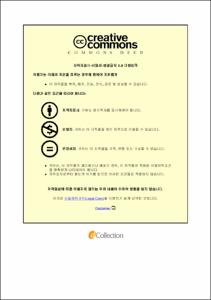Characterization of Bioactive Compounds Recovered from Undaria pinnatifida Sporophyll Using Supercritical CO2 and Subcritical Water
- Abstract
- Undaria pinnatifida sporophyll contains various bioactive compounds such as fucoidan, minerals, polyunsaturated fatty acids, functional pigments, and polyphenols, etc. However, it has limitations for use as a food source directly due to its hard texture and odor. Therefore, the development of processing technology for using seaweed as a food source and technology for extracting useful ingredients is being actively carried out. Traditional methods for extracting bioactive compouns, such as soxhlet extraction, maceration and hydrodistillation, use a large amount of organic solvents and have poor selectivity. Accordingly, an environmentally friendly and efficient extraction method is required, and among them, the supercritical carbon dioxide (SC-CO2) extraction and subcritical water extraction (SWE) method is one of the sustainable clean process technologies. In this study, oil rich in polyunsaturated fatty acids and fucoxanthin was recovered using SC-CO2 and a hydrolysate with high antioxidant activity was recovered using SWE. For SC-CO2 extraction, the sample, temperature, and flow rate were set to 130 g, 50℃ and 27 g/min, while pressure was set to 20 to 30 MPa. For the comparison of the characteristics of oil, hexane extracted oil was used as a control, and fucoxanthin content, fatty acid composition, oil stability, and antioxidant activity for ABTS and DPPH were compared. As a result of the experiment, as the pressure increased, the content of fucoxanthin and antioxidant capacity both increased. As a result of fatty acid composition analysis, it was confirmed that the content of polyunsaturated fatty acids was high, including arachidonic acid (C20:4n6) and EPA (C20:5n3). For SWE, the sample, pressure, and extraction time were set to 20 g, 4 MPa, and 30 min, while temperatures ranging from 120℃ to 220℃ were applied. For comparison of characteristics of hydrolysate, hot water extraction (H.W.E) and ethanol extraction (E.T.E) were used as controls, and chemical composition (total sugar, reducing sugar, protein, phenolic content, flavonoid content), antioxidant activity of ABTS, DPPH, antihypertensive activity, and antibacterial activity against strains of Staphylococcus epidermis and Escherichia coli were investigated. The chemical composition of the hydrolysate showed the maximum content of total sugar, reducing sugar, total protein, phenolics and flavonoids was 165.03 ± 0.40 mg glucose/g, 53.15 ± 0.50 mg glucose/g, 113.62 ± 0.66 mg BSA/g, 38.04 ± 0.18 mg PE/g and 10.34 ± 0.24 mg PE/g, respectively, at SWE temperatures of 140℃, 180℃, 180℃, 200℃ and 200℃. Antihypertensive activity showed the highest value at 180℃. Antioxidant activity of ABTS, DPPH and antimicrobial activity also showed the highest value at 200℃. Therefore, SC-CO2 extraction and SWE can be adopted as an effective technique with potential applications as a food material from U. pinnatifida sporophyll.
- Issued Date
- 2022
- Awarded Date
- 2022. 2
- Type
- Dissertation
- Publisher
- 부경대학교
- Alternative Author(s)
- Kim Sung Yeoul
- Affiliation
- 부경대학교 대학원
- Department
- 대학원 식품공학과
- Advisor
- 전병수
- Table Of Contents
- 1. Introduction 1
1.1. Undaria pinnatifida Sporophyll and Bioactive Compounds 1
1.2. Supercritical Fluid Extraction 2
1.3. Subcritical Water Extraction 3
1.4. Purpose of This Study 4
2. Materials and Methods 5
2.1. Materials 5
2.2. Methods 5
2.2.1. Proximate composition analysis 5
2.2.2. Supercritical carbon dioxide extraction (SC-CO2 extraction) 6
2.2.3. Hexane extraction 8
2.2.4. Fatty acid composition analysis 8
2.2.5. HPLC analysis of carotenoids 11
2.2.5.1. Fucoxanthin 11
2.2.5.2. Beta-carotene 11
2.2.6. Oil stability analysis 12
2.2.7. Antioxidant activity of oil 13
2.2.7.1. ABTS+ scavenging activity 13
2.2.7.2. DPPH radical scavenging activity 13
2.2.8. Subcritical water extraction (SWE) 14
2.2.9. Hot water and ethanol extraction 16
2.2.10. Physical properties of hydrolysates: color and pH 17
2.2.11. Chemical composition of hydrolysates 17
2.2.11.1. Maillard reaction products (MRPs) 17
2.2.11.2. Total sugar and reducing sugar 18
2.2.11.3. Total protein content 19
2.2.11.4. Total phenolic and flavonoid content 19
2.2.12. Antioxidant activities of hydrolysates 20
2.2.12.1. ABTS+ scavenging activity 20
2.2.12.2. DPPH radical scavenging activity 20
2.2.13. Antihypertensive activity of hydrolysates 21
2.2.14. Antibacterial activity of hydrolysates 22
2.2.15. Statistical analysis 22
3. Result and Discussion 23
3.1. Proximate composition of U. pinnatifida sporophyll 23
3.2. Yield of oil 25
3.3. Fatty acid composition of oil 28
3.4. Analysis of fucoxanthin and beta-carotene content in oil 30
3.5. Stability of oil 33
3.6. Antioxidant activity of oil 36
3.7. Hydrolysis efficiency 38
3.8. Color and pH of hydrolysates 40
3.9. Chemical composition of hydrolysates 44
3.9.1. Maillard reaction products (MRPs) 44
3.9.2. Total sugar and reducing sugar content 46
3.9.3. Total protein content 47
3.9.4. Total phenolic and flavonoid content 48
3.10. Antioxidant activity of hydrolysates 50
3.11. Antihypertensive activity of hydrolysates 53
3.12. Antimicrobial activity of hydrolysates 56
4. Conclusion 58
5. References 62
Abstract in korean 70
- Degree
- Master
- Files in This Item:
-
-
Download
 Characterization of Bioactive Compounds Recovered from Undaria pinnatifida Sporophyll Using Supercri.pdf
기타 데이터 / 1.03 MB / Adobe PDF
Characterization of Bioactive Compounds Recovered from Undaria pinnatifida Sporophyll Using Supercri.pdf
기타 데이터 / 1.03 MB / Adobe PDF
-
Items in Repository are protected by copyright, with all rights reserved, unless otherwise indicated.